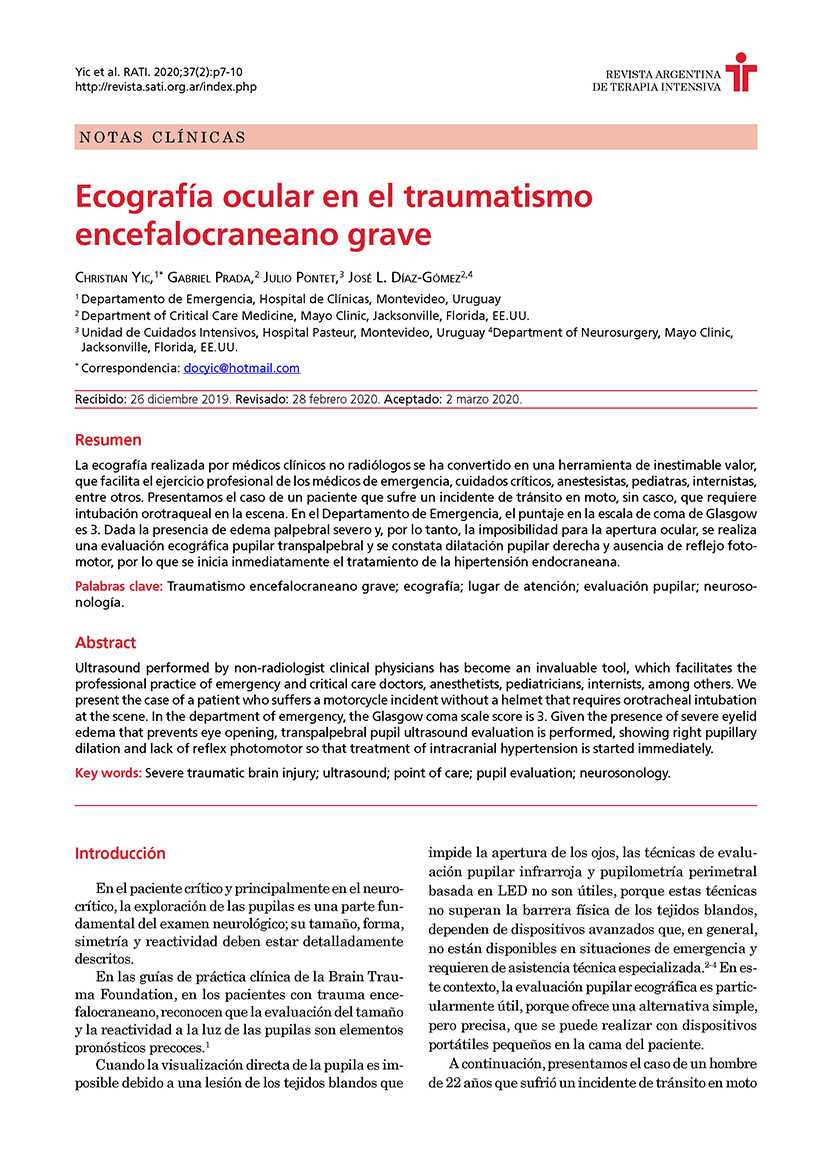Resumen
La ecografía realizada por médicos clínicos no radiólogos se ha convertido en una herramienta de inestimable valor, que facilita el ejercicio profesional de los médicos de emergencia, cuidados críticos, anestesistas, pediatras, internistas, entre otros. Presentamos el caso de un paciente que sufre un incidente de tránsito en moto, sin casco, que requiere intubación orotraqueal en la escena. En el Departamento de Emergencia, el puntaje en la escala de coma de Glasgow es 3. Dada la presencia de edema palpebral severo y, por lo tanto, la imposibilidad para la apertura ocular, se realiza una evaluación ecográfica pupilar transpalpebral y se constata dilatación pupilar derecha y ausencia de reflejo fotomotor, por lo que se inicia inmediatamente el tratamiento de la hipertensión endocraneana.
Referencias
REFERENCIAS
The Brain Trauma Foundation. The American Association of Neurological Surgeons. The Joint Section on Neurotrauma and Critical Care. Part 2: early indicators of prognosis in severe traumatic brain injury: Pupillary diameter and light reflex. J Neurotrauma. 2000;17:583–90.
Ellis CJ. The pupillary light reflex in normal subjects. The British Journal of Ophthalmology 1981;65:754-9.
Fankhauser F, Flammer J. Puptrak 1.0 — a new semiautomated system for pupillometry with the Octopus perimeter: A preliminary report. Documenta Ophthalmologica 1989;73:235-48.
Hasegawa S, Ishikawa S. [Age changes in pupillary light reflex. A demonstration by means of a pupillometer]. Nippon Ganka Gakkai zasshi 1989;93:955-61.
Hocking G, Mitchell CH. Optimizing the safety and practice of ultrasound-guided regional anesthesia: the role of echogenic technology. Curr Opin Anaesthesiol 2012; 25: 603-609.
Fern L, Quintero REZ. Ultrasonidos y «vida encefálica». 2006;30(3):113–5.
Stocchetti N, Maas AIR. Traumatic Intracranial Hypertension. N Engl J Med 2014;370:2121-30.
La revista no retiene los derechos de reproducción (copyright) por lo que los autores pueden volver a publicar sus trabajos con la sola mención a la fuente original de publicación.

